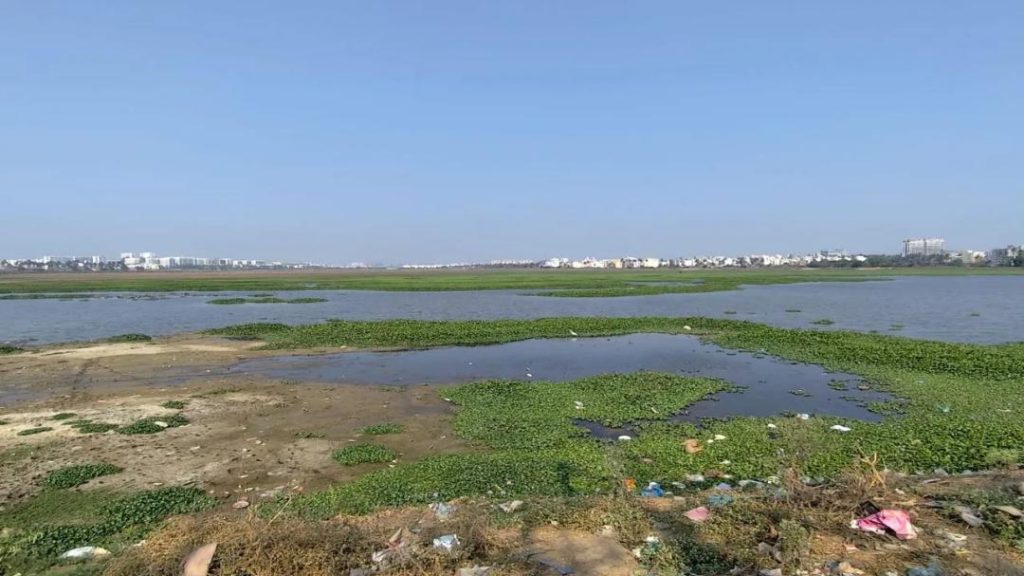
Farmers Grapple with Toxic Waters of Varthur and Bellandur Lakes
Once vital to farming and village life, Bengaluru’s Varthur and Bellandur lakes have turned toxic. These lakes, once thriving with agriculture and clean water, now suffer from pollution, drying beds, foul smells, and unusable water, leaving nearby communities struggling to adapt. The once-lush landscapes that surrounded these lakes have given way to dust, sewage drains, and dying fields, marking a tragic environmental decline.
Varthur and Bellandur lakes are situated in the heart of Bengaluru, the IT hub of India. The lakes were once the lifeline of the surrounding agricultural communities, providing a reliable source of water for farming and drinking purposes. The fertile soil surrounding the lakes made it an ideal spot for farming, and the lakes themselves supported a variety of aquatic life. However, over the years, the lakes have been ravaged by pollution, and the consequences are devastating.
The pollution of Varthur and Bellandur lakes is a result of various factors. One of the main contributors is the disposal of sewage and industrial waste into the lakes. The lakes’ catchment areas are also filled with garbage and pollutants, which flow into the lakes, making the water undrinkable and unusable for farming. The drying beds of the lakes have also become a breeding ground for mosquitoes, making it a health hazard for the surrounding communities.
The farmers who rely on these lakes for their livelihood are struggling to cope with the situation. They are forced to dig deep borewells to access water for their crops, but even those are not reliable. The water is often contaminated with chemicals and pollutants, which affect the quality of the crops. The farmers are also forced to use excessive amounts of pesticides and fertilizers to make their crops grow, which further exacerbates the pollution problem.
The consequences of the pollution of Varthur and Bellandur lakes are far-reaching. The farmers who rely on these lakes are struggling to make a living, and the surrounding communities are facing health hazards. The lakes’ pollution is also affecting the city’s water supply, as the water from these lakes is used for drinking and other purposes.
The state government has taken some steps to address the issue, but more needs to be done. The government has set up a task force to clean up the lakes, but the progress is slow. The government has also implemented measures to prevent further pollution, such as increasing the penalty for those who pollute the lakes. However, more needs to be done to address the root causes of the problem.
The people of Bengaluru are also taking matters into their own hands. Activists and volunteers are working together to clean up the lakes and raise awareness about the issue. They are also pushing the government to take more effective measures to address the problem.
In conclusion, the pollution of Varthur and Bellandur lakes is a serious issue that needs to be addressed. The farmers who rely on these lakes for their livelihood are struggling to cope with the situation, and the surrounding communities are facing health hazards. The state government and the people of Bengaluru must work together to clean up the lakes and prevent further pollution. The future of Bengaluru’s agricultural community and the health of its citizens depend on it.






